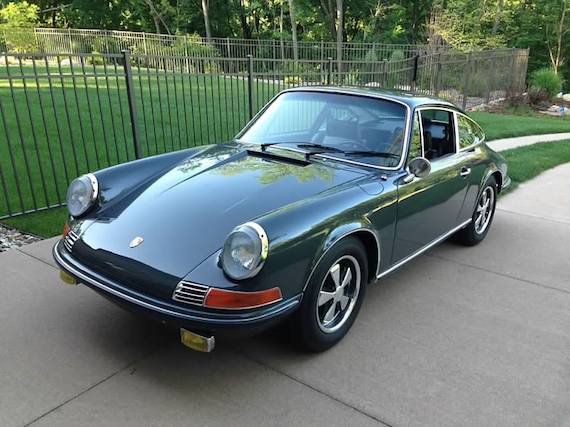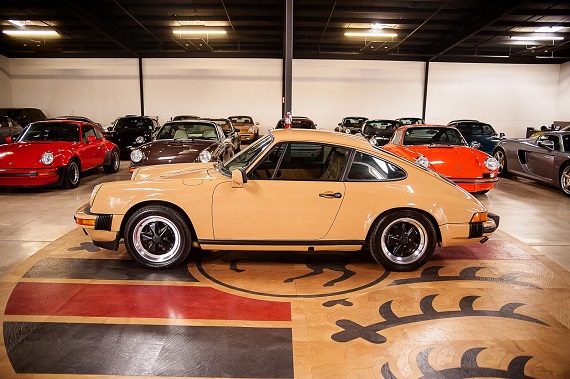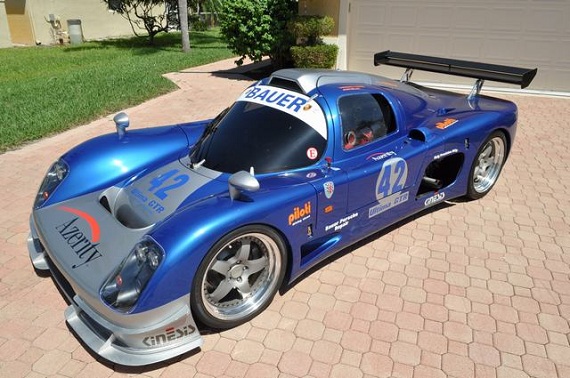The collector market has been in love with air-cooled Porsches for some time now. Make the car an air-cooled 911 Turbo and prices can really start to escalate. Thus, as the last model of the air-cooled 911 Turbo the 993 Turbo tends to be held in especially high regard. The 993 Turbo utilized a refined version of the 3.6 liter flat-six found in the 964 Carrera and strapped on twin turbochargers that raised power to more than 400 hp. It was also the first 911 Turbo to utilize all-wheel drive. Though the Carrera 4 had debuted with the introduction of the 964, Porsche chose to refrain from using that system for the 964 Turbo. Even with the added weight of the all-wheel drive system the 993 Turbo still tends to be quicker than the 964. These were Porsche’s final expression of their turbo-charged air-cooled boxer engine, which brings us to the car featured here: a Polar Silver 1996 Porsche 911 Turbo located in Florida.
Category: Porsche
Throughout these pages, I have extolled the virtues of Porsche’s 912 for its simplicity married to the classic 911 design. Here we have the car that effectively became the replacement for the 912 as Porsche’s entry-level rear-engined sports car, following the cessation of 912 production in 1969. While a 911T does not come at quite the cost savings of the 912 it nonetheless offers the most reasonable cost for anyone who must have a vintage long-hood 911 and values seem destined to appreciate at a steady rate that easily eclipses the 912. The 911T was first introduced as the entry-level 911 in 1967 featuring a 2.0 liter flat-six engine delivering 110 hp to the rear wheels through a standard 4-speed or optional 5-speed manual transmission. In 1970 engine displacement was increased to 2.2 liters with an appreciable rise in power to 125 hp. With only 2240 pounds to propel, performance of the 911T is capable, if not brisk, but still provides the driving dynamics and characteristics so highly desired by Porsche enthusiasts. The example featured here, a restored Slate Gray 1970 Porsche 911T with 5-speed manual transmission, comes to us from our friends at EuroWerkz.
CLICK FOR DETAILS: 1970 Porsche 911T at EuroWerkz
Comments closedPaul and I were talking this past weekend about how there may be no other car more indicative of wild ’80s styling than a 930 Slantnose Cabriolet. The flared wheel arches, pop-up headlights, massive tail, side grills, and all of this on a cabriolet. The very shape of the car screams 1980s. Top it all off with the driving dynamics of a 930 and these cars had it all! And what do you know, after that discussion one came up for sale. The car featured here, a Grand Prix White 1988 Porsche 930 Slantnose Cabriolet puts all of that on vivid display. A car like this helped defined childhood wonder for those of us who grew up in this period and is certain to have graced more than one bedroom wall poster. With just over 41K miles this factory Slantnose shows very little wear and is certain to provide someone with a nice investment opportunity.
CLICK FOR DETAILS: 1988 Porsche 930 Slantnose Cabriolet on eBay
1 CommentPorsche has long offered a wide variety of colors to suit the palettes of its buyers and from time to time we come across these cars for sale. Late last week I wrote up a Talbot Yellow 911SC with a relatively high price that I figured was in large part due to the color choice. Talbot Yellow has that nice combination of being both rare and also eye-catching. Since writing up that car, we’ve come across two more examples in rare colors so this seemed like as good a time as any to take a look at what the market might bear for 911s that come in colors other than the standard Red, Black, and Silver. The first one is a restored 1980 Porsche 911SC in a very period-correct choice of Cashmere Beige.
CLICK FOR DETAILS: 1980 Porsche 911SC on eBay
2 CommentsLet’s be honest; racing – especially at a high level – isn’t cheap. Heck, even running track days in a non-competition car isn’t cheap. For those that go to track days, a cycle usually occurs; they buy a “fast” car, go to the track, and fairly quickly realize it’s not as fast as they thought it was. Then years of modifying an inherently flawed chassis and ruining it occurs, until the owner has both a car which is no longer good on the road and which still isn’t incredible on the track. Frustrated, they sell that car and buy a purpose-built race car for a large sum of money and proceed to blow everyone out of the water, causing the other trackphiles to modify their cars to keep up…you get the point. Now, enter the world of Porsches and you’re taking already very fast cars and making them even faster – and much more expensive. Trick out a new GT3 and you’re looking at a somewhat fragile car that will set you back $200,000. While it would undoubtedly be fast, it wouldn’t be in the same league as today’s purpose-built tube frame 600 horsepower monster – the Ultima GTR:




